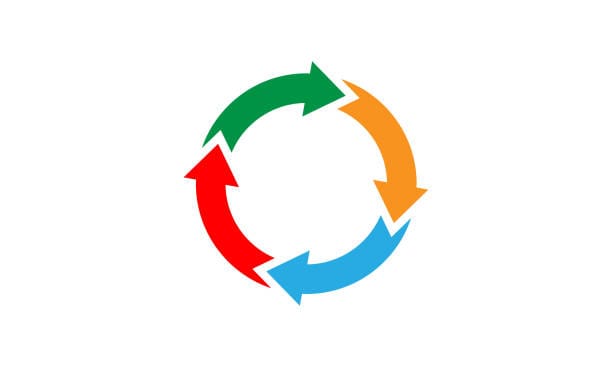Microservices Didn’t Kill Your Velocity; Your Lack of Test Observability Did

Every engineering organization wants to move faster.
So they break the monolith.
Spin up microservices.
Deploy independently.
Celebrate continuous delivery.
But soon, something feels off.
Shipping slows down.
CI pipelines get longer.
Bugs show up between services, not inside them.
And your team spends more time debugging tests than writing code.
Here’s the truth:
Microservices didn’t kill your velocity. Your lack of test observability did.
Legacy QA Tactics in a Modern World
Most teams scale their architecture but not their testing strategy.
They go from 3 services to 30; but still treat QA like it’s 2013:
- Relying on end-to-end test scripts to catch everything
- Running bloated CI jobs with no clear ownership
- Using pass/fail test reports with no insight into why things failed
- Isolating QA from logs, traces, or service health data
It’s not the system complexity that slows teams down.
It’s flying blind inside that complexity.
The Pain of Testing Distributed Systems
Here’s what QA looks like in a microservices environment that’s scaled faster than the test tooling has:
1. Cross-Service Integration Tests Take Hours to Debug
A test fails; but which service caused it?
Is it the frontend?
The authentication layer?
An expired token?
A database migration not synced?
A single red test result can require triaging five or more services, three log systems, and a Slack thread that goes nowhere.
2. Environments Are Inconsistent Across Services
The payment service is on staging.
The user service is stuck in development.
The frontend thinks everything is live.
Running stable integration tests becomes nearly impossible when every service is in a different state.
3. CI Pipelines Fail in Unpredictable Ways
Sometimes a test passes.
Other times, it fails without explanation.
You rerun the job; it passes.
You rerun again; it fails.
Is it a flaky test?
Flaky infrastructure?
A race condition in a dependent service?
No one knows, because the pipeline only shows pass/fail; not why.
4. Coverage Gaps Grow as Systems Scale
New services are added every quarter, but no one’s asking:
- Do we have test coverage across this new login or billing flow?
- Are we simulating what happens when this queue fails?
- Does the user journey still complete from start to finish?
Each new service becomes a black hole of untested behavior.
Teams assume existing tests will catch it; until something breaks in production.
According to TestDevLab, most teams lack proper coverage across service boundaries, especially in asynchronous workflows and pipelines.
End-to-End Tests Are Becoming the Workflow
End-to-end tests are supposed to validate workflows; not become one.
But for many teams, they’re the only glue holding a complex system together.
- They run slowly
- They break often
- They become the only signal teams trust
When that happens, QA isn’t really testing anymore.
They’re managing an unreliable process just to maintain a sense of stability.
A TestOps Mindset for Distributed Systems
If your architecture is distributed, your testing strategy must be too.
It’s not about writing more tests.
It’s about gaining observability, traceability, and control.
Here’s how high-performing teams adapt their QE strategy to handle complexity:
1. Instrument Tests with Tracing Context
When a test spans multiple services, you need to see exactly what happened in each one.
Start injecting trace IDs and request IDs into:
- Automated test runs
- API calls from test scripts
- Log events tied to test workflows
With tools like Datadog, Honeycomb, Jaeger, or OpenTelemetry, you can trace a single test across services and pinpoint where the issue occurred.
You’ll no longer just know that a test failed; you’ll know why.
2. Build Environment-Aware Test Suites
Tests should adapt to the current environment rather than assume everything is perfect.
- Skip tests when required services are missing
- Run health checks before triggering workflows
- Use feature flags to handle unstable or staged components
This reduces wasted time and gives QA the ability to detect environment drift; not just test failures.
3. Decouple End-to-End and Contract Testing
Not all integration testing needs to be full-stack.
Introduce contract testing using tools like:
- Pact
- Spring Cloud Contract
- Dredd
These allow services to validate their inputs and outputs without depending on other services. End-to-end tests should only cover high-risk, business-critical workflows.
4. Centralize Test Logs and Metadata
Every test should output rich metadata:
- Trace IDs and correlation tokens
- Service interaction logs
- Request/response snapshots
- Screenshots or videos on failure
Centralize these in a dashboard like Allure TestOps, ReportPortal, or a custom Elastic stack.
QA should be empowered to investigate a failed test the same way SREs investigate outages—with evidence, not speculation.
5. Track Coverage Across Service Boundaries
Traditional unit test coverage is easy.
But meaningful QA comes from knowing which business workflows span which services; and whether they’re being tested.
Use labels, tags, or test grouping strategies to:
- Map workflows to services
- Differentiate between automated and manual coverage
- Track flakiness, failure rates, and gaps
For example, if your checkout flow hits six services, your dashboard should show:
- Which services are tested directly
- Which are only covered indirectly
- Which have no testing touch-points at all
That’s real coverage awareness.
Testing in the Age of Complexity
Modern systems aren’t just harder to build; they’re harder to validate.
The solution isn’t more testing; it’s smarter testing.
To move fast in a distributed world, teams need:
- Visibility across the test lifecycle
- Intelligent pipelines with clear failure reasons
- QA engineers empowered with the same observability tools as developers
- A shift from centralized test control to decentralized test ownership
Avoiding Chaos
Testing distributed systems with monolithic thinking is a recipe for chaos.
If your QA team is relying on brittle end-to-end tests, flaky CI pipelines, and disconnected tools, you’re not building confidence; you’re simulating it.
Modern architecture demands modern testing.
That means observability.
That means traceability.
That means a complete mindset shift—from test execution to test engineering.
Because it’s not complexity that slows you down.
It’s a lack of visibility into that complexity.
👉 Want more posts like this? Subscribe and get the next one straight to your inbox. Subscribe to the Blog or Follow me on LinkedIn



Comments ()